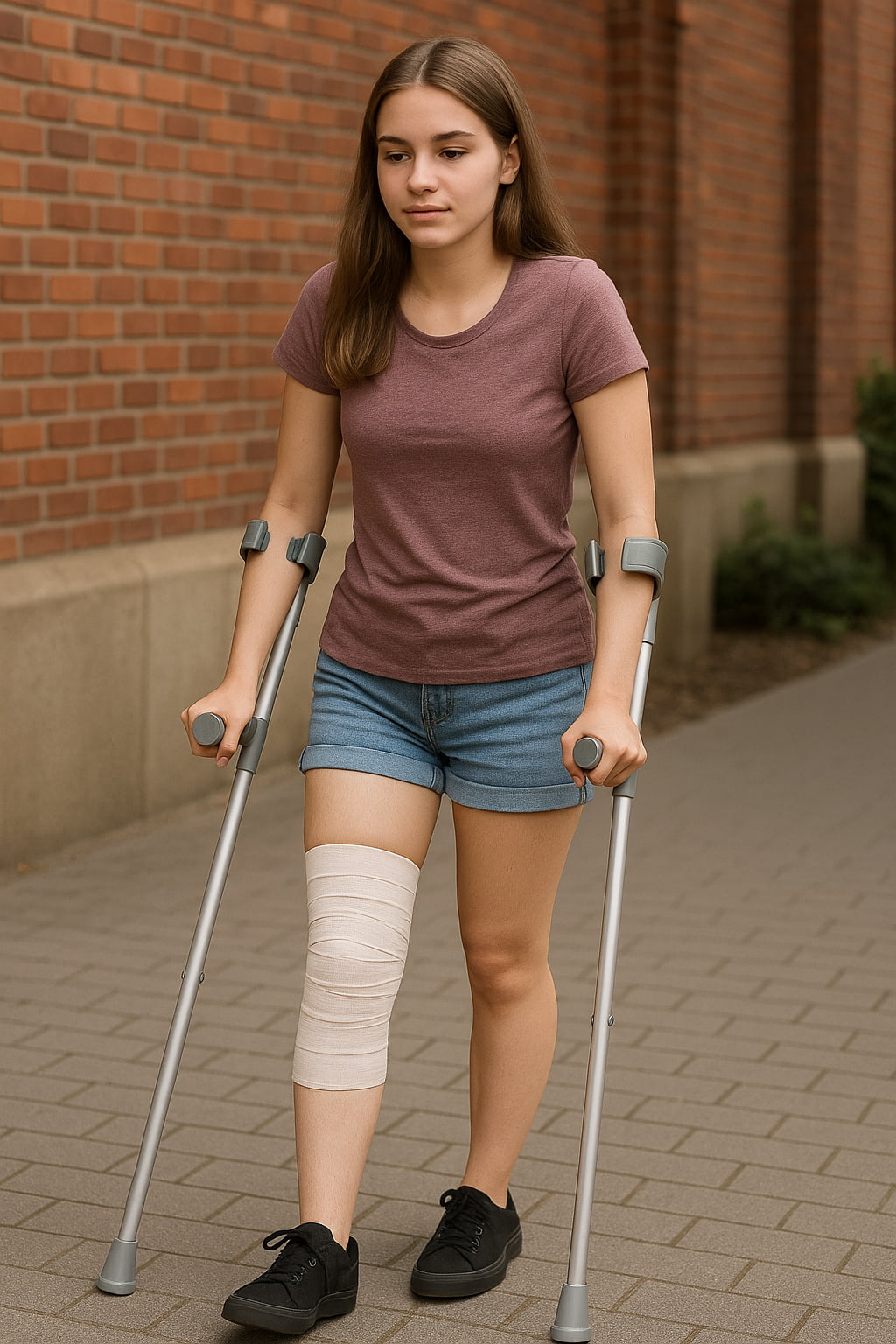See Also:
Rehabilitation Goals
- Protect the reconstructed ligament and surgical site
- Restore normal knee range of motion (ROM)
- Regain quadriceps and lower limb strength
- Improve functional movement and balance
- Return to sport and full activity safely
Expected Recovery Time
| Milestone | Timeframe |
|---|---|
| Full weight bearing without crutches | 2–6 weeks |
| Knee flexion 90°+ | 2–4 weeks |
| Full knee ROM (0–135°) | 6–12 weeks |
| Return to light jogging | 3–4 months |
| Return to sport-specific training | 4–6 months |
| Full return to sport | 6–9 months |
Phase 1: Early Post-op (0–2 weeks)
Goals
- Protect the surgical site
- Minimize pain and swelling
- Begin early muscle activation
- Prevent joint stiffness
Instructions
- Use crutches and brace as directed by your surgeon
- Keep the leg elevated and apply ice (15–20 minutes every 2–3 hours)
- Keep incisions clean and dry
- Avoid active knee flexion beyond 90°
Exercises
- Ankle pumps (hourly)
- Quadriceps sets
- Straight leg raises (if no extension lag)
- Passive knee extension to 0°
- Gentle heel slides (flexion to tolerance, up to 90°)
Phase 2: Range of Motion and Activation (2–6 weeks)
Goals
- Increase ROM gradually
- Achieve near-full extension and flexion to at least 120°
- Normalize gait with reduced crutch use
- Improve quadriceps control
Instructions
- Continue brace use as instructed, unlocking gradually
- Progress to full weight bearing as tolerated
- Use ice after exercises
Exercises
- Heel slides to increase flexion
- Patellar mobilizations
- Wall slides (within ROM limits)
- Terminal knee extensions
- Stationary bike with high seat (once flexion >100°)
Phase 3: Strength and Control (6–12 weeks)
Goals
- Restore full ROM
- Improve leg strength and control
- Normalize walking and stair climbing
- Begin functional strengthening
Instructions
- Discontinue brace if cleared by surgeon
- Continue using ice post-activity if swelling persists
- Monitor for pain and adjust intensity accordingly
Exercises
- Mini squats
- Step-ups and step-downs
- Leg press (within safe ROM)
- Core and hip strengthening
- Balance and proprioception drills (e.g. single-leg stance)
Phase 4: Advanced Strengthening and Light Impact (12–20 weeks)
Goals
- Build muscular endurance and coordination
- Begin light running and agility work
- Resume low-impact activities
Instructions
- Follow a gradual return to impact loading under supervision
- Avoid pivoting or twisting activities prematurely
Exercises
- Jogging on treadmill or track (if cleared)
- Agility ladder drills
- Resistance band exercises
- Plyometric prep (double-leg hops, landing mechanics)
Phase 5: Return to Sport (5–9 months)
Goals
- Regain full strength, agility, and sport-specific skills
- Prevent re-injury through proper biomechanics
- Complete a return-to-sport assessment
Instructions
- Increase sport-specific drills as tolerated
- Wear appropriate bracing if advised during initial return
Exercises
- Sport-specific drills (e.g. cutting, jumping, pivoting)
- Functional testing (hop tests, agility runs)
- Plyometric training
- Continued strengthening and proprioception
When to Contact Your Surgeon
- Increased pain or swelling that does not improve with rest or ice
- Signs of infection (redness, warmth, drainage, fever >38°C)
- New locking, catching, or instability in the knee
- Difficulty bearing weight suddenly
- Concerns about the progression or a significant setback
Disclaimer:
This is a general guideline. Your physiotherapist or Dr Lambers may adjust the protocol based on your specific condition and progress.
